
views
New Delhi: Pushpa Devi joins her hands and bends forward completely on the mat in her village’s community hall, her forehead touching the floor. “This is how we used to bow down to touch their feet,” she says, demonstrating how till a few years ago people from the scheduled castes (SCs), scheduled tribes (STs) and other backward classes (OBCs) used to greet the Thakurs and the Brahmins in Khaira Siyanagar village of Madhya Pradesh’s Rewari district.
With no water to irrigate their own fields, small farmers who are mostly from the marginalised castes in the village, could barely grow one round of crop. While the men would leave for Surat, Mumbai and Delhi in search of work for eight to nine months a year, the women would labour on the farms of the landed, mostly upper caste families, for 12 hours a day starting six in the morning.
They would be handed two kilograms of jowar or bajra for the day’s labour. It was for this financial dependence on the upper caste houses that the SC, ST and OBC households would not question the former’s dominance.
“If an upper caste woman was fetching water from the village well, the other women were not allowed to step on the parapet till they left,” explains another local resident, Anarkali, sitting next to Pushpa.
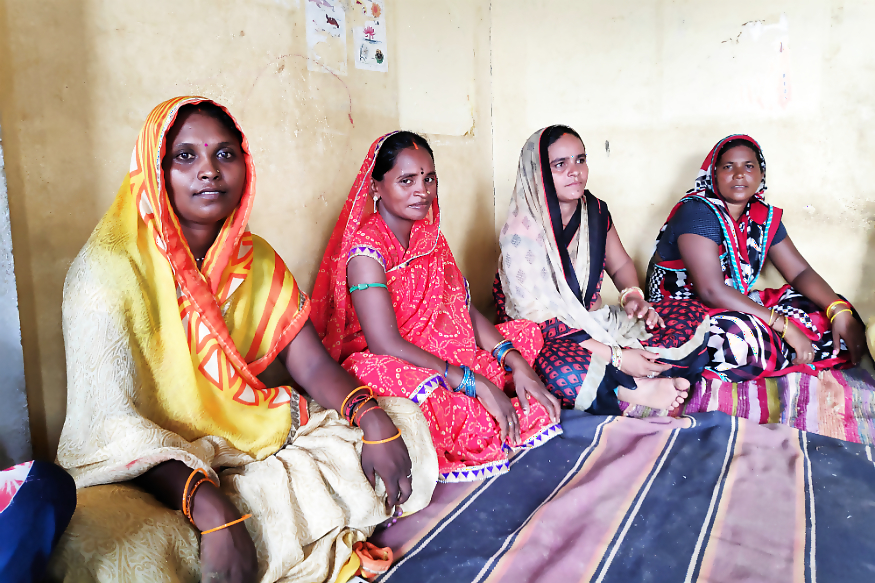
Pushpa Devi, Phool Kumari, Phool Kumari Yadav and Anarkali in the village community hall at Khaira Siyanagar village, Rewa. (News18.com)
The surrounding areas were no better. Tilon village used to have at least 10 silicosis cases each year, says Chandra Mani, yet poverty would drive men to silica mines in Allahabad, 80 kilometres away.
In the neighbouring district, Umaria, the summer months were a curse. The wells, ponds, handpumps and canals would dry and the fields be left barren. Men would leave the villages in search of work and women would be left behind to fetch water and care for the children and the elderly.
The union government’s Mahatma Gandhi National Rural Employment Guarantee Act (MGNREGA), which guarantees 100 days of work to each household to counter this kind of economic and resource distress, had rusted and was almost dead in these villages.
In Madhya Pradesh, the scheme’s performance was one of the worst. Out of more than 31 lakh households that demanded work in 2014-15, only 1.5 lakh received 100 days of work. More than 8,000 works were incomplete in the state in that year. Total payment due for the works for the same period was Rs 9.3 crore.
Poverty and children
A direct impact of unstable income in homes and limited resources in villages could be seen on children’s health. Malnutrition was high in these villages and, to address it, Bhopal-based non-profit Vikas Samvad Samiti (VSS) along with Germany-based child rights group Terre Des Hommes (TDH) tied up with NGOs working with marginalised communities in four districts – Rewa, Umaria, Panna and Satna.
The project, called Dastak, ran in 100 villages between 2015 and 2018 with the aim to strengthen existing welfare schemes by making the villagers self-sufficient in food security. One of the ways was by tackling grievances from the bottom up.
To address malnourishment directly, the project introduced creches in eight villages which provided nutritious meals to children and seeds for kitchen gardens at home so that the families could grow their own vegetables. But as work began, the NGOs realised that the basic needs of food, water and timely income of families were unmet.
“We needed to address the immediate priorities of families. Pending wages in MGNREGA was a big problem. People had stopped asking for work because they hadn’t been paid for more than two years. Our first step was to ensure the pending wages are paid,” says Sachin Jain, secretary at VSS.
In the villages where the NGOs worked, residents had no information of MGNREGA allocations and how the panchayat was using it. They alleged that barely 10 days of work in a year was reaching each household, registration of muster rolls was haphazard and the wages were always cut.
“If the work was for 14 days, we used to only get seven days’ money,” says Santalesh Devi from Rewa.
Gram sabha meetings were only on paper and participation of women in any village decisions was absent. If they ever attended, they would sit at the back with their faces covered with their sarees. In village after village it was the same story.
“We lost faith in MGNREGA and stopped demanding work. Even if work was offered by the sarpanch, no one would opt for it,” adds Santalesh.
Bottom to top
The NGOs started organising the women and the youth into vigilance committees to oversee the functioning of government schemes. Within a year, women who would earlier not speak in their own homes, became the loudest voices in the gram sabhas, says Ramnaresh Yadav, secretary, Rewanchal Dalit Adivasi Seva Sansthan, a non-profit in Rewa associated with the Dastak project.
In Kohka-47 village of Umaria, 143 workers had not been paid wages for three years amounting to Rs 3.36 lakh. Women from 25 villages organised a rally and, with the district collector’s intervention, the money was released within three months. In 2017-18, a total of 1,823 families received MGNREGA work for 80 to 120 days each in 25 villages. Money worth Rs 2.14 crore was received within a month.
In Rewa’s 26 villages, between 2015 and 2018, more than 700 written applications were sent to offices demanding wage recovery. In the same period, 904 families received work under MGNREGA for 48,160 man-days worth more than Rs 83 lakh. In three years, 1,421 job cards were made.
“We now give written applications to the panchayat, the block and the district collectorate or dial 181 Chief Minister helpline. If nothing works, we can even sit on a dharna in Bhopal and Delhi,” says Rajni Baiga from Kohka-47 village.
In a 2010 study in four states by the Institute for Human Development, researchers found how when women started earning under MGNREGA, they had a say in decision-making and their confidence levels increased.
In the villages of MP, a similar trend was noticed. Women became active participants in the village development plans, for which villagers were never consulted earlier. They started demanding the assets most needed in their villages.
In Rewa, 22 village development plans were prepared by the people and discussed in gram panchayats. MGNREGA works were a big part of it. People asked for medh bandhan (building farm bunds) work on fields, pond, drain and well cleaning and deepening, cement roads and levelling of playgrounds and community sitting spaces. More than 35 works were conducted in three years besides plantation of 10,000 trees of amla, mango, sheesham, sagwan, neem, karonji, moonga and guava. Work came for 100 days a year and money was transferred to the bank accounts of the workers.
Similarly, in 2017-18 Umaria created cement roads, repaired ponds, built new ponds and wells besides medhs and crematories. Majority of funds under MGNREGA were converged with the Pradhan Mantri Awas Yojana and money for constructing homes were transferred to people’s bank accounts.
Keep or discard?
While the villages in MP were reviving a programme which had gone dysfunctional, policy debates at the Centre were taking a new direction.
In 2015, a year after forming the government, Prime Minister Narendra Modi said in the Lok Sabha that his political instincts tell him to continue MGNREGA because it is a living example of the UPA’s monumental failure.
Mocking the Opposition and the scheme, he said, “After 60 years of independence you had to send people to dig ditches.” He, however, added that since he wants to work for the betterment of the country, he will add whatever is needed to make this scheme better for the poor.
In the years that followed, the scheme did see higher budgetary allocations. From Rs 34,699 crore in 2015-16, to Rs 60,000 core in 2019-20.
Yet, low wages, delay in payments, corruption, quality of assets and no demand for work remain setbacks of the scheme. Social audits which are a means to bring transparency in the scheme are not taking off in many states, say experts.
In MP, for instance, the wage rate under the scheme in 2015-16 was Rs 159 per day per person. In 2019-20, it was only increased to Rs 176. In 2018-19, payments worth about Rs 144.3 crore were due under the scheme. Only 76,771 families received 100 days of work in that year. On an average only 47 days of employment is provided to a household in a year.
Adding to this debate, the Economic Survey in 2016-17 mentioned the idea of universal basic income (UBI). It said, “In India in particular, the case for UBI has been enhanced because of the weakness of existing welfare schemes which are riddled with misallocation, leakages and exclusion of the poor.”
A guaranteed basic income, it argued, can provide a form of insurance and since an individual, and not a household, will be a unit of beneficiary, “UBI can enhance agency, especially of women within households”.
Cash works
Even before the Economic Survey brought UBI into the discussion, a trade union for women, Self Employed Women’s Association (SEWA), in partnership with UNICEF, had conducted pilot projects in MP’s Indore district to see how basic unconditional income every month is utilised by households in tribal and non-tribal villages.
Every adult and child received Rs 200 and Rs 100 each, respectively, for a year in eight villages in 2011. The amounts were raised to Rs 300 and Rs 150 for seven more months. Twelve other similar villages received no basic income. Two tribal village were also selected where one received money and the other did not. The amounts were Rs 300 and Rs 150 for one year.
Six years after the trial run ended, Malibadodia village is bustling with goats. The families saved money and a few of the households bought the animals, which have now multiplied. Many more homes invested in the asset and have sold them when needed for over Rs 5,000 apiece.
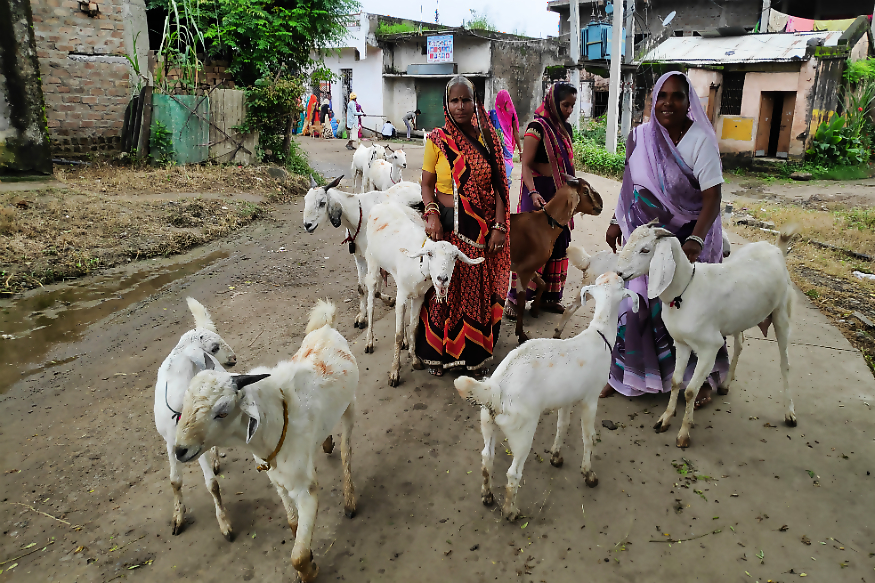
Women rearing goats in Malibadodia village, which they bought using money from SEWA basic income pilot. (News18.com)
Fifty-five-year-old Savitri Bai saved the money she and her husband received for six months and bought a gas stove. Others fixed their falling house roofs, bought bicycles for their children or admitted them in private schools.
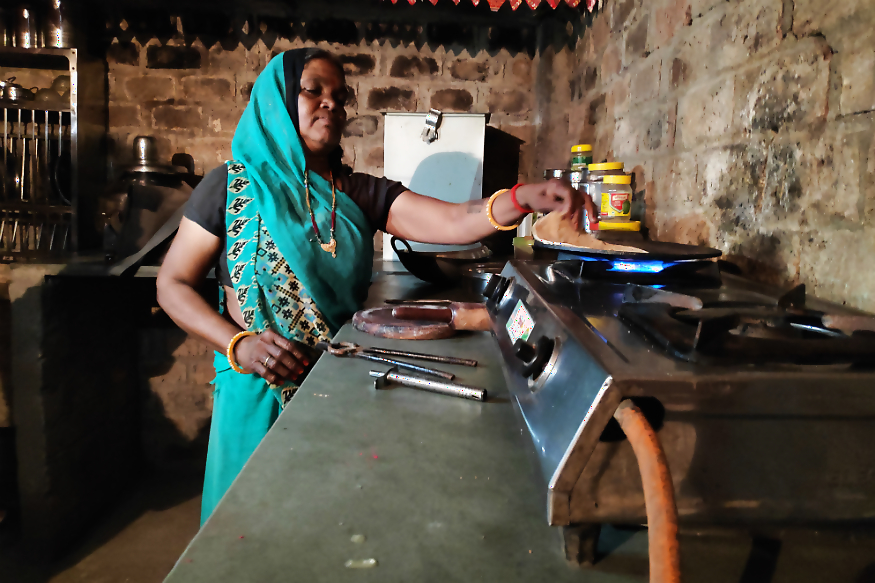
Savitri Bai bought a gas stove saving basic income money. (News18.com)
In its reports, SEWA noted, “The basic income had a strong positive welfare impact, in terms of living conditions, nutrition, health and schooling, and a strong economic impact, in terms of increased earnings, more work and productive labour and more assets.”
When the pilot project started in the village, Leela Bai Kevat, 59, was bedridden with a paralytic attack. Instead of buying an asset, her family pooled in the income on Kevat’s treatment and medicines, which was their immediate need. “Had the money not come, we would have to take loans,” Kevat says.
The studies also note that though families did receive a cushion with the income for their immediate needs, some of them had dropped back to their previous condition, mainly as a result of health shocks.
Just like Radha Bai, 45, who first bought food with the income as her family with eight children used to go through days when they would sleep hungry. While the money gave temporary relief, the death of her husband and mother-in-law within a month pushed the family back into grave poverty.
After each death, she explains, following customs, she had to hold feasts for the entire village. She took a loan for a lakh in 2014 from a local moneylender and each month she is only able to pay the interest amount. The debt on her now is Rs 1.5 lakh. With her uncertain daily wage work, she says, it is impossible to arrange two meals for the family, let alone repay the loan.
A few lanes away, 30-year-old Suman Yadav bought a sewing machine and took classes to learn stitching, hoping that she would use the skill and the asset to earn an income. But she now feels that the money was wasted. “There is no work. No one comes to the village to get clothes stitched,” she says.
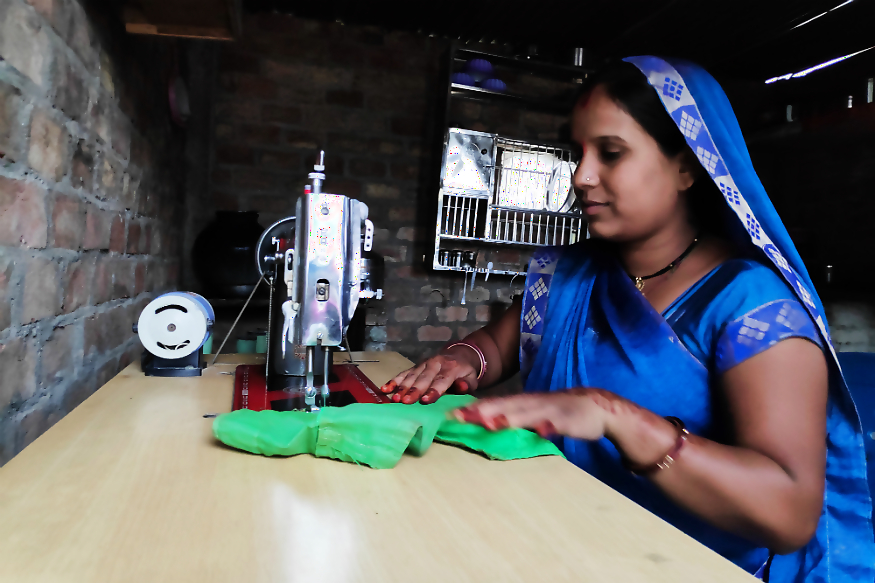
Suman Yadav bought a sewing machine using basic income, but has no work now. (News18.com)
While the SEWA reports noticed individual gains of the money, it failed to note the power dynamics within Malibadodia. The women allege that all the households in the village gave their first income as donation for the Hanuman temple that was being built. Chander Singh Yadav, an unofficial caretaker of the shrine, asked for it, they say.
Sitting on the ledge of the Hanuman temple, Yadav said he never forced anyone to give the money. “Each family was only supposed to give Rs 200. Many families did not donate,” he says, hesitatingly.
Yadav has no account of how much total donation he received, or how much was spent on painting or decorating the temple. In the village, no one asked him to give accounts.
The individual assets collected in the village are visible. But the women complain that the village development has come to a standstill. There are no gram sabha meetings, no proposals are prepared and, despite demands, no building or road repair works are ever taken by the sarpanch.
“The roof of the village’s crematory has broken. When it rains, it is hard to keep the funeral pyre burning. Tyres were used recently to keep the pyre aflame at a woman’s last rites,” Shanti Bai lashes out.
She adds that when the government-assigned auxiliary nurse midwife (ANM) visits the village for immunisation, she doesn’t even have a room. Several requests to repair the old abandoned anganwadi building has fallen on deaf ears.
About two kilometres away, sarpanch Suresh Bagwan from Badi Kalmer panchayat, under which Malibadodia village falls, is inspecting the construction of a watershed tank. This work, he says, falls under MGNREGA but he has hired a contractor who has brought his own labour. He has made seven such structures in two villages, all through local contractors.
“MGNREGA doesn’t work here,” says Bagwan. He adds, the wages under MGNREGA are low and no one works for that much money. He admits that he never proposed this work in the village meetings. No one in Malibadodia village knows this work is ongoing.
No clear solutions
Will replacing welfare schemes with a nominal income pull people out of poverty? Can cash in bank accounts enhance resources or bring social empowerment in a village economy? Those working at the grassroots say there are no clear answers.
“This premise that poverty is only because people don’t have money itself is flawed,” says Jain. He adds that while debating how to end poverty, resource poverty must also be factored in.
Besides, cash handed to households will only be put back into the markets as people will buy clothes, mobile phones, motorcycles. “This will boost the market. Demand will be generated and it will lead to more production. Demand in the market will also generate employment,” explains Jain.
But this may also prompt market distortions. “Wheat and rice prices will go up. And if all households start investing in same assets, the value of that commodity will drop, causing a glut in the market. Who will regulate all this?” asks Pushpendra Singh, district coordinator, Dastak project, Rewa.
Shikha Joshi, general secretary, SEWA MP, agrees that UBI should start as an experiment first by the government. And while the welfare schemes such as subsidised grains and MGNREGA should not be stopped, an additional personal income must be added.
“People in pilot villages are still taking benefits of the assets created back then. If other programmes could alleviate poverty then there would have been no discussions around UBI. But I don’t mean every scheme should shut. There are many schemes which are dead. People have never benefitted from them. These should be shut,” says Joshi.
The debate around UBI is only going to grow more nuanced. But back in the Dastak villages, percentage of malnourished children declined from 55 per cent to 25 per cent by the end of 2018. Khaira Siyanagar village now has no malnourished child. By 2017, the villages had produced vegetables worth Rs 61 lakh in their kitchen gardens.
The project has stopped now, but women in Rewa continue to enjoy their new status. “We go to the markets, buy our own clothes and are no longer beaten with sticks,” says Phool Kumari.
If they toil on others’ fields, their work starts only at 9am and ends at 4pm, with a lunch break in between, and nothing less than 10 kilograms of grain.
(The author is a 2019 Promise of Commons Media fellow)










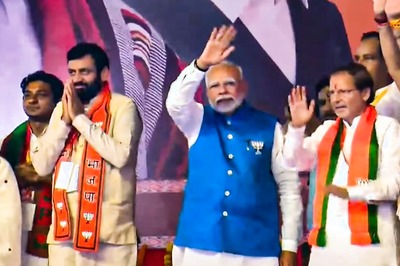

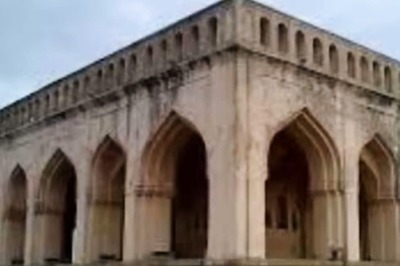
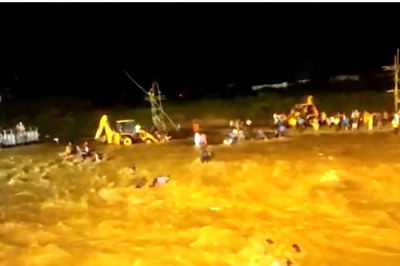





Comments
0 comment